[Hill: 358-366.
Foley & van Dam: p. 237-242 (slightly different terminology]
Viewing Transformations
The modelling transformation expresses the position of objects in the world.
We derive the viewing transformation by first expressing the position of the camera
in the world. This transformation is then inverted to express the position
of the world with respect to the camera.


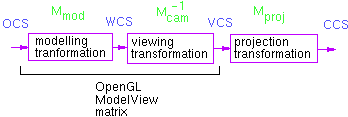
Defining Mcam
A common way of defining the camera position and orientation
is to use:
- an eye point
- a reference point
- an up vector
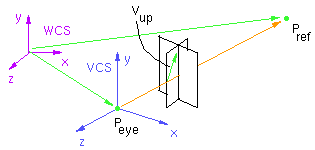
Building M_cam
The vectors i,j,k can be determined as follows:
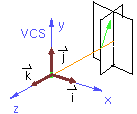
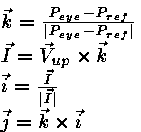
These vectors can then be used to form a change-of-basis matrix,
which is composed with a translation to yield the camera-to-world
transformation and its inverse, which is what we really desire.
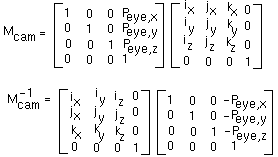
Positioning the camera in OpenGL
The OpenGL auxilliary library provides the call gluLookAt() to create
the viewing transformation.
gluLookAt(ex,ey,ez,rx,ry,rz,ux,uy,uz>
where (ex,ey,ez) gives the eye point,
(rx,ry,rz) gives the reference or 'lookat' point, and
(ux,uy,uz) gives the up vector.
This function call
postmultiplies the current matrix, so the easiest way to use it is:
glMatrixMode(GL_MODELVIEW);
glLoadIdentity();
gluLookAt(ex,ey,ez,rx,ry,rz,ux,uy,uz);
/* setup modelling transformations here */







